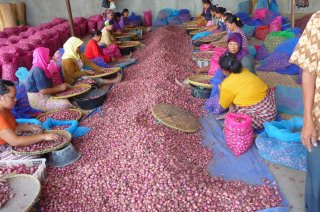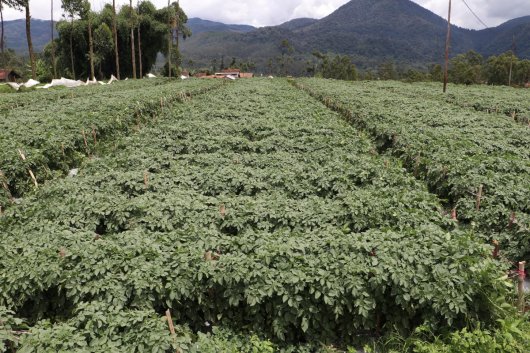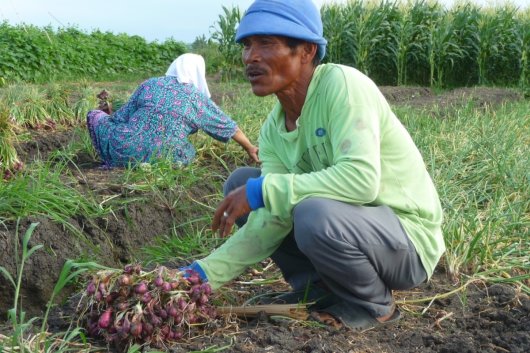Studies
Seed potatoes in Indonesia
Potato production in Indonesia has been stagnant during the period 2009-2018, while the consumption of potatoes especially in processed form has increased rapidly. Consequently, imports of frozen potato products more than tripled over the last decade. Major reason for the lacking potato production is the low availability of good quality seed potatoes to increase potato yields. In 2018, 2.5 million kilograms of certified seed potatoes were produced in Indonesia, which is barely sufficient to plant 2% of the total potato area of 70,000 ha. One of the reasons for the low availability of seed potatoes is that certified seed potatoes can only be produced at high altitudes because of the high pest and disease pressures at lower altitudes in tropical Indonesia. The research question was to identify suitable areas for seed potato production given local agro-ecological conditions.
Shallots in Indonesia
The Government of Indonesia aims to increase the shallot production to meet the increasing domestic demand for shallots and to increase exports. The introduction and expansion of true shallot seed (TSS) systems could contribute to these aims. TSS systems use true seed as starting material instead of bulbs, which is the conventional way to produce shallots in Indonesia. Insight in the agro-ecological suitability of cropland in Indonesia for TSS systems is helpful to identify areas that are most promising to increase current production levels and/or to develop new shallot areas. A country-wide suitability study for TSS systems has been carried out that contributes to the discussion where shallot can best be produced given prevailing biophysical conditions of soils and climate and the need to use natural resources as efficient as possible.
Suitable areas in Africa
Sub-Saharan Africa needs to produce more food to feed its own growing population. To reduce the negative impact of expanding agricultural land on natural habitats, higher yields per hectare are necessary. Higher yields require higher nutrient inputs of e.g. nitrogen (N), given the generally low N inputs in African agriculture. However, both from an economically and environmentally point of view, higher N inputs should be applied with the highest possible N use efficiency (e.g. expressed as kg grain per kg N applied). We have used a modelling approach to calculate theoretical optimal N fertilizer use efficiencies of maize. The results can serve as benchmark to guide field/crop management towards more efficient farming practices and are presented in maps to illustrate spatial differences in Sub-Saharan Africa.
Acknowledgement
We thank Mr. Rob Bekker of De Groot en Slot company and Dr. Nikardi Gunadi of Balitsa for providing information and pictures. The two Indonesia projects have been made possible by the Netherlands Ministry of Foreign Affairs, Royal Netherlands Embassy in Jakarta.




